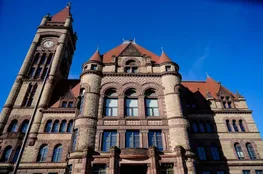As election season unfolds, a dominant theme emerges: voters prioritize the economy. But what does this mean? Economic conditions, often depicted abstractly in political discussions, differ from voters' perceptions. According to Lonnie Golden, an economist from Penn State, these perceptions can diverge significantly from measurable economic realities. He suggests a bias where people perceive the economy or job market incorrectly. It seems there's a pervasive underestimation of economic health, even with strong metrics such as low
unemployment and high job creation. Despite robust economic indicators, voters express dissatisfaction, which is mirrored in campaign tactics on both sides. Democrats, while promoting economic policies, acknowledge voter struggles, whereas Republicans criticize past inflation issues under current Democratic leadership. Donald Trump's claims often ignore the context of earlier economic downturns during his tenure and focus on a narrative of economic decline. This narrative highlights a disconnect between actual and perceived
economic conditions. Some political scientists suggest that electoral perceptions are increasingly shaped by partisanship rather than actual economic data. Sarah Niebler, from Dickinson College, points out that partisan identities heavily influence economic perceptions. Voters tend to evaluate economic policies through a partisan lens, complicating the interpretation of voter priorities. This partisanship-driven perception challenges traditional views of economic impact on voting behavior, making it difficult to predict
how economic conditions influence electoral outcomes. Even when personal financial situations improve, partisan alignment often dictates economic outlook. Polling data shows that Republicans frequently cite the economy as a primary concern, despite personal financial gains, while Democrats attribute economic stability to current leadership. This reflects a broader trend where economic views are less about facts and more about partisan narratives. Economic metrics remain significant, revealing nuanced stories of wage growth and
inflation-adjusted earnings. Data shows disparity in wage gains between those who switched jobs and those who remained. Though most laborers saw benefits post-pandemic, these gains are often obscured by political discourse focusing on those who feel economically marginalized. Politicians acknowledge economic achievements cautiously, aware that proclaiming success might appear insensitive to struggling demographics. Economic standards, compared to voters’ expectations, add complexity. Perception gaps arise from skewed comparisons
and misinformation, intensifying voter dissatisfaction. These perceptions contribute to political shifts, with demographic groups exhibiting varying responses to perceived economic threats. For instance, non-college educated white men have shown increased support for policies they perceive as protective against economic competition, like immigration. In navigating these complex perceptions, it becomes difficult to disentangle genuine economic concerns from those colored by partisanship. Political analysis increasingly recognizes that the economy, like other
partisan issues, is refracted through political allegiances, complicating the identification of the economy as a stand-alone voting issue. Ultimately, voters' evaluation of economic conditions is influenced more by partisan identity than by objective analysis. This shift suggests that resolving economic issues electorally involves addressing partisan narratives as much as actual economic policies.
























